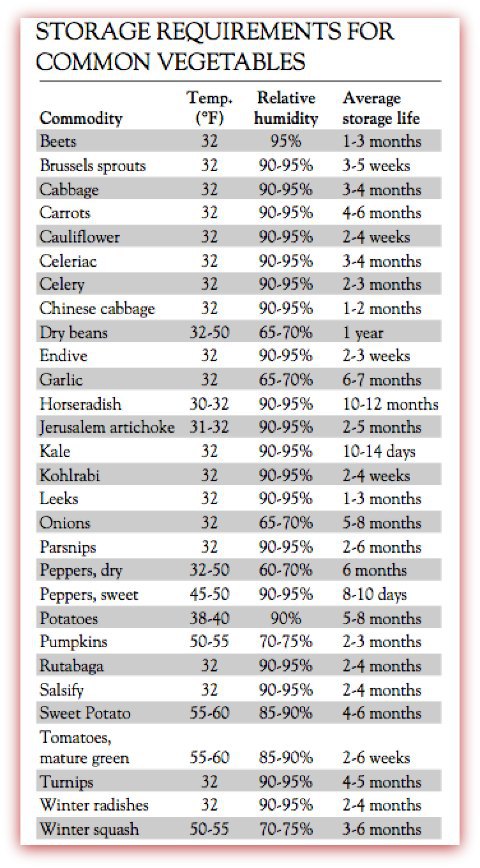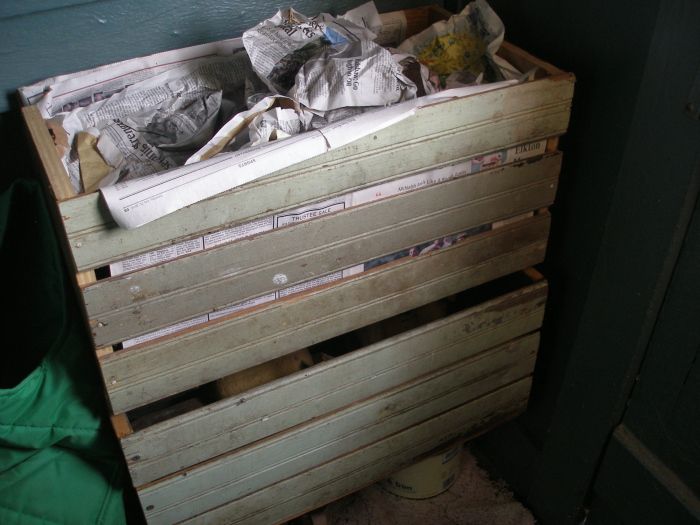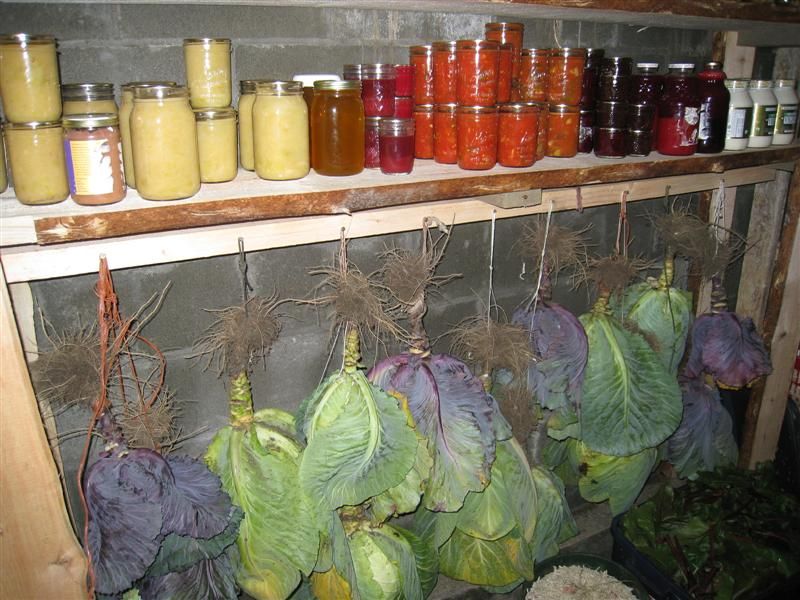Storing Root Crops Over the Winter Months Without a Root Cellar!
It's almost that time of year where you will be pulling your root vegetables like Potatoes, Beets, and Carrots for example. Some people like to leave them in the ground all winter and just harvest them when they need them. This would certainly work for some people, but some just may not have the ability to access their garden over the winter months, so this post will point out some of the best ways to store your root crops long term while keeping them fresh, without having a root cellar.
There are many many ways to safely do this, so I will discuss a few that I have tried over the years and seem to be what works for me. I will discuss other methods and why I do not use them.
First of all I will discuss the importance of preparing the vegetable for the storing long term. Most of the root crops such as beets, carrots and potatoes need to be pulled from your garden when it has had at least 3-4 days of dry weather. Once you have pulled them from the soil, you will need to allow them to dry for a few days. This will ensure that the root hairs will dry up and the vegetable will go into a dormant state, meaning it will cease growing. You must ensure that you never wash your vegetables that you want to store. The soil will fall off naturally when placed in the sun to dry after you have pulled it out of the soil.
Once the vegetable is dry, you will want to cut off the top leaving about an inch of the stem, for your beets, as this will ensure that it will not bleed out when cooking them later on. Carrots and other crops can have their tops cut back to as close to the vegetable as you can. You will also ensure to never cut off the root at the bottom of your vegetable as this will create an environment for rotting. It is important to only store the vegetables that are not damaged, from pests or harvest. Storing these damaged crops will almost guarantee rotting early on, and may spread the rotting to the rest of the crop being stored.
Not everyone has a root cellar to store their vegetables, and it is not necessary to have one to ensure a long storage of your crops. You whatever space you have. Depending on the amount of time you require to store them will determine the storage method you use. However most methods do allow for storage for more than a month. The ideal condition for your storage of the vegetables would be a cool dark moist environment at about a temperature of 34 degree F or 1 degree C, as long as it is fairly cool temps, with the high humidity. If you allow the environment to increase in warmth this will create a possibility for new growth on the vegetable or possibly rotting.

One of the best ways to control the temperature of your stored crops is to insulate. The best ideal location for storage is closest to the floor, but not directly on the floor, like in a basement, you may want to place some boards and have them resting on the boards on the floor. You will need to put them in something as they rest on the floor boards. A cardboard box or wooden crate are ideal. Some of the best insulators are sawdust, or peat moss. Laying a layer on the bottom of the box and them your vegetable and then another layer of insulator etc. When packing your vegetables the roots can be touching. You can pack them tight but ensure that there is room for air circulation between the vegetables. I have seen some people use sand as an insulator, but I don't support this idea as it may bring on some unwanted challenges such as bugs. Do not worry if your stored crop has frozen, you have not lost it. Just simply use it up as it thaws, it will only last a day or two after it has thawed. Straw is also a good insulator for storing your vegetables. Again using this insulator is not one that I prefer as it may also be an attractive place for rodents to nest.

Many of my farmer/gardening friends use the newspaper method for storing their crops such as apples and potatoes. They simply wrap individually the potato or apple and layer it in the box or tub or container that they are storing in the cool dark humid environment, such as their basements.

Some of you may want to be creative a create a make shift root cellar outside, near your entrance so that you can store your vegetables. Here is one example that works.

It is in my opinion best to use saw dust and place them in a crate or wax covered box I grabbed from the grocery store, and I place them in my basement on a slab of wood placed on the basement floor. Many of my friends do use sand as the insulator, I just don't like that method. Ideally the best way is to mulch the garden and pick all winter long. Either way you can store your crops for the winter indoors or out and have fresh crisp vegetables to enjoy for those soups and stews on a cold winter night.

Happy Trails
Image Sources:
http://awaytogarden.com/how-to-store-garden-vegetables-for-winter/
http://www.thyhandhathprovided.com/2011/02/lettuce-potatoes-muffins-pie.html
http://simplyresourceful.blogspot.ca/2012/10/storing-carrots-in-boxes-for-winter.html
http://www.offthegridnews.com/off-grid-foods/how-to-store-fresh-vegetables-for-months-without-a-refrigerator/
What a great post. I remember my dad used to store roots in sand. I've never heard of using sawdust before. That final picture is such eye-candy.
Thank you for this article. Growing our own food is one thing but preserving it is another. I remember my grandpa laying out the onions and potatoes saying we had to let them "harden off" first before we could bring them inside.
I loved the pictures. I store my potatoes and cabbages the same way as you.
Thank you for these ideas. I have no basement and no root cellar and live in a zone 5 so storing my produce is always difficult so I end up doing mostly freezing and preserving - which is fine but fresh is the best way to really enjoy the fruits of my labor I think. I love the picture with the hanging cabbages. Never seen that done before. Love the post!
Thank you. Hanging Cabbage is similar to hanging your garlic and onions.
great post
Thank you, Following you now
Congratulations! This post has been upvoted from the communal account, @minnowsupport, by gardengirlcanada from the Minnow Support Project. It's a witness project run by aggroed, ausbitbank, teamsteem, theprophet0, someguy123, neoxian, followbtcnews/crimsonclad, and netuoso. The goal is to help Steemit grow by supporting Minnows and creating a social network. Please find us in the Peace, Abundance, and Liberty Network (PALnet) Discord Channel. It's a completely public and open space to all members of the Steemit community who voluntarily choose to be there.
Amazing thanks for the ideas we have problem with the storage our ayotes pumpking is similar a family plants, because our pumpking are harvest on november and december and we storaged during about 2 months and their star to hurt and we need to eat very fast because their loose and do you need collect the seeds for the next crop, i think if i put inside soil it would be have constantly temperture and would be better.
Best regard and thank you for the trick.
Pumpkins can be stored in a cool environment also. Yes harvest your seeds.
I am going to start growing few vegetables next year with my flowers, I like pea pods, a few carrots and you have just made me think about beetroot, I love home cooked beetroot :)
Beets are a great source of a sugar crave when you need it. Did you know that in the great depression they used Beets to make cakes because sugar was rationed, that is how sweet they are. Good luck with your growing next season and if you need any hints or tips, just message me.
Thank you, I'll definitely be in touch lol I need all the help I can get as never grown veg. I am definitely going to try beets :)
Thanks for a plethora of good information.
Nice post with lots of great suggestions. It is a little difficult to have a cold cellar in a tropical country, so I end up freezing or canning some. Some crops I can actually grow three or four times in a year with careful planning.
Good advice and good methods to cultivate, I will apply for myself and my father who loves to cultivate in the field. Thank you very much for sharing. We continue reading. Greetings.